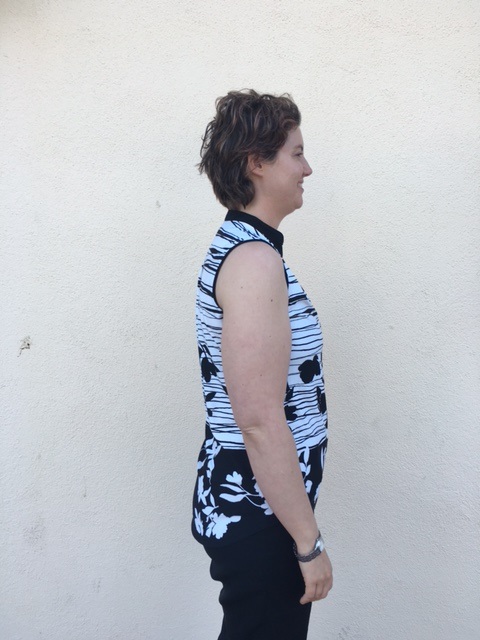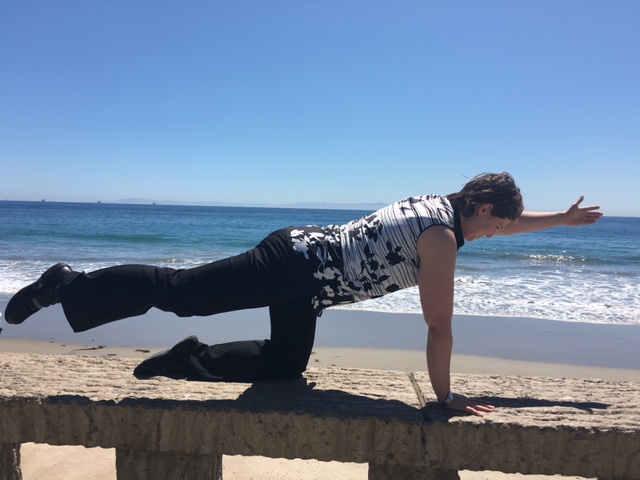Neck pain is the second most common muscle problem reported in this country (lower back pain is the first). [i] Unfortunately, around 1/3 of patients that report neck pain symptoms will go on to develop chronic neck problems. [ii]
Everyone has a neck and too many of us have pains in those necks. In my travels throughout the exercise world, I have met with plenty of bad advice and ignorance with regards to the neck. That’s the main inspiration for writing this post.
Conversely, I have met with very skilled physical therapists, athletic trainers, and chiropractors whose advice regarding neck care and proper positioning during exercise has made a tremendous difference in my being able to lift more weight and remain pain free in my daily life. I have also seen how treating the neck properly with physical therapy and chiropractic has made a big difference for many of my patients.
Neck pain, in addition to being unpleasant and making it difficult to move one’s head, also can have effects on the shoulder, upper back, jaw, and the ability to lift one’s arms overhead. For anyone who needs to use their arms for activities such as housework, sports, etc., good neck position and strength can be important! Neck pain can also affect balance and dizziness. This is because many of the position sensors of the body (proprioceptors) are in the neck. Thus, introducing pain into this relatively small area also affects the body’s ability to detect where it is in space. I’ve seen many patients who have come in to see me for a stiff neck who are surprised to discover they have greatly reduced ability to balance. So, we know that paying attention to the neck is important. How do we go about taking care of our necks?
There are a variety of neck problems and many of them have specialized exercise routines. However, there are also some general principles that apply in a more general sense.
- Posture is key!
When we say “posture,” many people think about ballerinas, people walking around with books on their heads, etc. I get nervous about these mental pictures because they send up leading to very stiff movement. People will hardly move at all because they are trying so hard to maintain good posture, but that defeats the purpose. Good posture is more about having a good “home base” for the body, a good alignment that keeps the muscles in a good length and the skeleton aligned such that gravity can help support it with less strain on the muscles.
You can see with this picture that the poor posture means the neck muscles are overstretched, and gravity pulls throughout the head at an awkward angle.

With good posture, gravity pulls through the center of the head, allowing the head to be held up more by the skeleton and less by the muscles. If the head has a better posture as “home base,” it can move anywhere it needs to with much less difficulty. The result … less neck pain.

- Stabilization exercises are very useful.
You need to be able to keep your head in a good position not just during the day, but with a variety of activities as well. I teach head posture initially when you are laying down because gravity can help you get into a good position with very little demand on the upper body. From there, I move into a series of exercises that challenge the head to remain in a good position with sitting, standing, on hands and knees, etc. These exercise not only teach good “dynamic” posture so that the head stays in a good position regardless of what the arm and legs are doing, but also strengthens the neck muscles.
Feedback is important in making sure these exercises are done correctly!

- Don’t ignore soft tissue work (the neck is much more than joints).
There are treatments chiropractors and physical therapists can do to speed along healing of soft tissue such as muscles and ligaments that contribute to neck pain. One study published in the February 2016 Journal of Sports and Physical Therapy shows that a combined program of exercise and manual therapy has greater effects on moving the head side to side, night pain, and quality of life after four weeks when compared to a group doing only exercises.[i]
This isn’t to say that exercises on their own can’t eventually correct the problem. However, manual therapy can speed along the process. We’re here to help!
Roberta Brehm, D.P.T.
[i]
Celenay ST, Akbayrak T, Kaya DO. A Comparison of the Effects of Stabilization Exercises Plus Manual Therapy to Those of Stabilization Exercises Alone in Patients With Nonspecific Mechanical Neck Pain: A Randomized Clinical Trial. J Orthop Sports Phys Ther. 2016;46(2):44-55.
[i]
Ferrari R, Russell AS. Regional musculoskeletal conditions: neck pain. Best Pract Res Clin Rheumatol. 2003;17:57-70.
[ii]
Coˆte´ P, Cassidy JD, Carroll LJ, Kristman V. The annual incidence and course of neck pain in the general population: a population-based cohort study. Pain. 2004;112:267-273.


May 02, 2016 at 11:22 PM
Excellent!